A royal palace of Jin Dynasty found in Chongli District, Hebei Province
Taizicheng site is located at the the Sitaizui village, Chongli district of Zhangjiakou city, Hebei province. In preparation for developing the Taizicheng area as a skiing venue for the 2022 Winter Olympic Games, Hebei Provincial Institute of Cultural Relics and archaeology together with other institutes conducted the archaeological excavation to the Taizicheng site in succession from May in 2018, which achieved significant achievement.
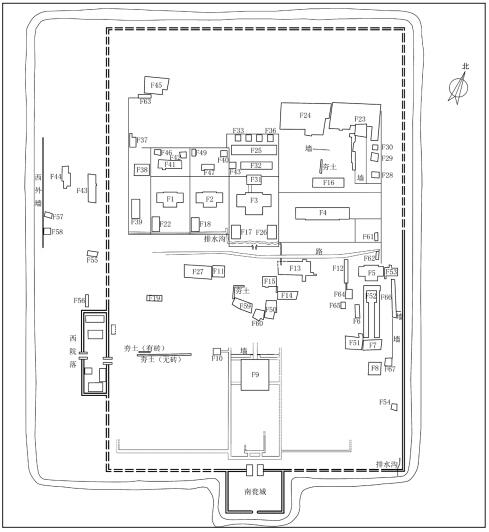
Distribution map of Taizicheng site
According to the prospecting and excavation, we confirmed that Taizicheng city site is rectangular in plane, measuring 400 meters from south to north, and 350 meters from east to west, covering an area of 140,000 square meters. At present, the bases remains were left underneath the east, west and north walls, and the walls were surrounded by the moat. There were 2 west walls, 50 meters apart from each other. The south gate was revealed with the barbican entrance. 67 building foundations, 14 roads and 2 drainages had been confirmed inside the city.
In the year of 2018, the excavation area has reached 6,500 square meters, they cleared 6 features including the south gate, No.9 Building Foundation,No.3 Courtyard, south part of No.1 and No.2 Courtyard, north-east corner and building foundations outside the west wall etc..
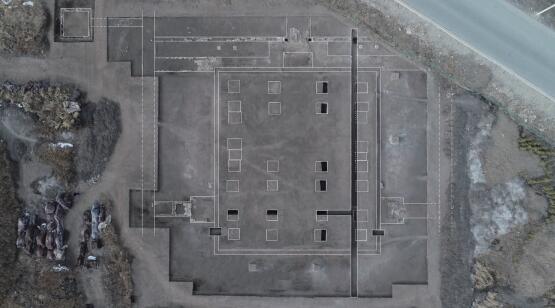
The plane of No.9 Building
The road network is clear inside the south gate. Thanks to the section to the south wall and its barbican’s east wall, the construction process has been figured out.
As for the section of No.9 Building Foundation, they found the two periods of construction process. In addition they reveal the pavilion building in the northwest part, so that we can define the annex buildings nearby.
No.3 Courtyard was consisted of the north and the south yard, measuring 105.3 meters from north to south and 46.7 meters from east to west. The south yard was composed of the main hall, east and west side halls, back hall. The north yard was made up of 2 long-strip bases and 5 square bases. No.1 and No.2 Courtyard were located to the west of No.3 Courtyard, whose plane is similar to that of No.3 Courtyard but small in scales. Outside the city, building foundations were found 690 meters far from the west wall located in the strategic passage, which is predicted to be guard-standing remain.

The plan of No.1,2 and 3 building complex
The relics of the Taizicheng Site were mainly kinds of clay semi-circular tiles and pan tiles, phoenix and beast roof ridge decoration, kalavinka, as well as other building components. Besides, there were some green glazed semi-circular tiles and pan tiles and roof ridges, etc. Among the components, there were lots of gray bricks stamped with Chinese character marks as “Nei (Internal)”, “Gong (Palace)” and “Guan (Official)”, while 18 porcelains were marked “Shang Shi Ju” (Bureau of Imperial Cuisine), together at the bottom.
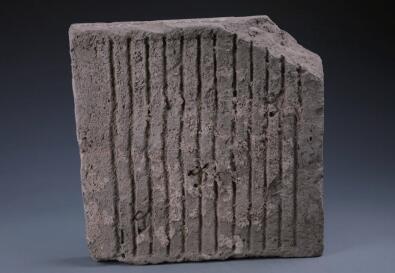
Gray bricks stamped with Chinese character marks as “Nei (Internal)”
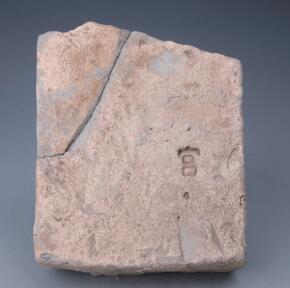
Gray bricks stamped with Chinese character marks as"Gong (Palace)”
The assemblage such as animal head figurine, kalavinka, phoenix roof ridge were similar to that of Jin Dynasty Mausoleum in Beijing. Eaves tile with animal pattern, arc pattern gargoyle (designed to convey water from a roof and away from the side of a building) were similar to those uncovered from Upper-Capital of Jin Dynasty and the Ancient Baoma City. In addition, white glazed porcelains marked with ”Shang Shi Ju” (Bureau of Imperial Cuisine) which are elsewhere associated with Ding kiln in Quyang city of late Jin Dynasty period, thus archaeologists put the period of the palace during the middle to late period (1161-1234) of the Jin Dynasty.
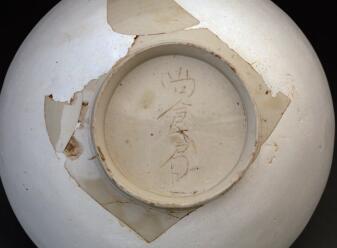
White glazed porcelains marked with ”Shang Shi Ju” (Bureau of Imperial Cuisine)
Taizicheng city is in small size but with high level building structure, features such as commercial district and residence as well as military installations still have not been found. Concentrated bricks with marks “Shang Shi Ju” (Bureau of Imperial Cuisine), “Nei” (Internal)” and “Gong (Palace)” showed its royal identity. Based on the historical document, it is probable that this city site is the Taihe Palace recorded in the History of Jin dynasty as being the summer palace where Emperor Zhangzong stayed in the year of 1202 and 1205. (Translator: Zhang Chen)

